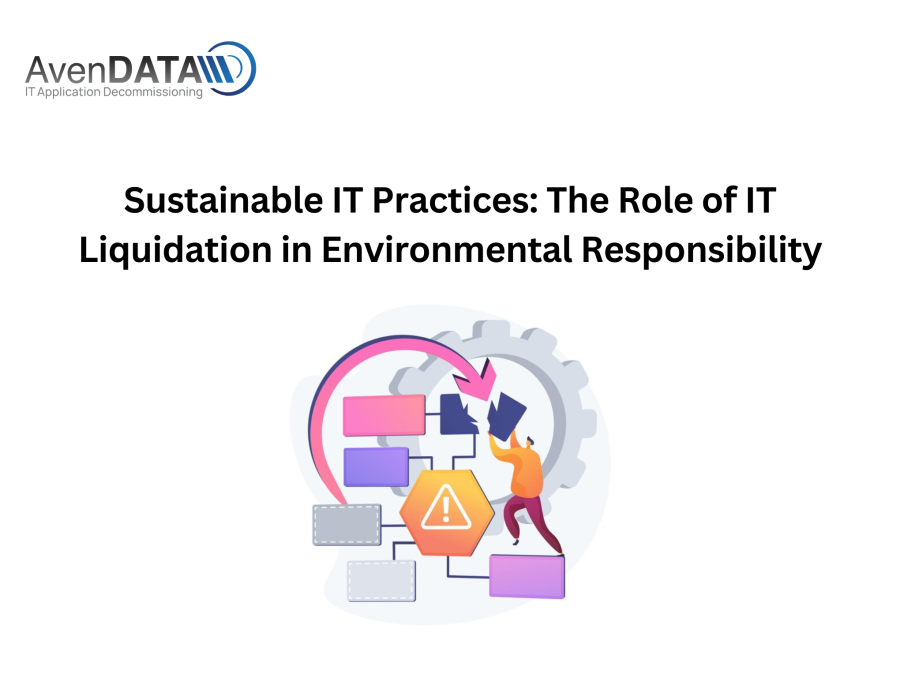Introduction: As organizations increasingly prioritize sustainability, the management of end-of-life IT assets has emerged as a critical aspect of environmental responsibility. Sustainable IT practices, including the strategic liquidation of obsolete IT equipment, play a pivotal role in minimizing electronic waste and promoting environmental stewardship. In this blog, we will explore the significance of IT liquidation in sustainable IT practices, highlighting its role in reducing e-waste, conserving resources, and fostering a circular economy that aligns with environmental responsibility.
Minimizing E-Waste Generation: The disposal of obsolete IT assets through responsible liquidation minimizes the generation of e-waste, which comprises electronic devices and equipment that are no longer in use. By engaging in IT liquidation, organizations prevent these devices from ending up in landfills, where they can pose environmental hazards due to the presence of toxic materials. Instead, IT liquidation channels these assets towards proper recycling, refurbishment, or repurposing, effectively reducing the environmental impact associated with e-waste accumulation.
Ethical Recycling and Disposal: IT liquidation facilitates the ethical recycling and disposal of end-of-life IT equipment. Responsible liquidation partners with certified e-waste recyclers who adhere to environmentally sound practices for handling electronic devices. Through this approach, organizations ensure that retired IT assets are recycled in a manner that minimizes pollution, conserves resources, and complies with environmental regulations. Ethical recycling and disposal represent a proactive step towards mitigating the environmental footprint of IT equipment at the end of its lifecycle.
Resource Conservation: The liquidation of IT assets contributes to resource conservation by reclaiming valuable materials and components from retired devices. Through refurbishment and recycling processes, precious metals, plastics, and other materials can be recovered from obsolete IT equipment, reducing the need for extracting raw materials from the environment. This conservation of resources aligns with sustainable practices and supports the efficient use of materials in a circular economy framework.
Circular Economy Principles: IT liquidation supports the principles of a circular economy by enabling the reuse and repurposing of IT assets. Rather than discarding obsolete equipment, organizations can participate in the circular economy by extending the lifespan of IT assets through refurbishment and redeployment. This approach not only reduces the environmental impact of IT equipment but also promotes a sustainable model of resource utilization, where products and materials are kept in use for as long as possible.
Carbon Footprint Reduction: By engaging in IT liquidation, organizations contribute to the reduction of their carbon footprint associated with IT asset management. Rather than resorting to energy-intensive processes for disposing of electronic waste, responsible liquidation focuses on energy-efficient recycling and sustainable material recovery. This approach aligns with carbon reduction initiatives, as it minimizes the environmental impact of IT equipment disposal and supports the organization’s sustainability goals.
Extended Product Lifecycles: Through IT liquidation, organizations extend the lifecycles of IT products and components, thereby reducing the demand for new manufacturing and the associated environmental impacts. By refurbishing and repurposing retired IT equipment, organizations promote a circular approach to product lifecycles, effectively prolonging the usefulness of IT assets and diverting them from premature disposal. This extended lifecycle approach contributes to sustainable resource management and waste reduction.
Compliance with Environmental Regulations: IT liquidation ensures compliance with environmental regulations governing the disposal and recycling of electronic waste. By partnering with reputable liquidation providers and e-waste recyclers, organizations uphold their legal obligations related to environmental responsibility. This proactive stance not only safeguards the environment but also demonstrates the organization’s commitment to ethical and sustainable business practices.
Conclusion: Sustainable IT practices, including the strategic liquidation of end-of-life IT assets, play a pivotal role in advancing environmental responsibility within organizations. Through responsible liquidation, organizations minimize e-waste generation, promote ethical recycling and disposal, conserve resources, embrace circular economy principles, reduce their carbon footprint, extend product lifecycles, and comply with environmental regulations. By integrating IT liquidation into their sustainability initiatives, organizations demonstrate a commitment to environmental stewardship, resource conservation, and the establishment of a circular economy that aligns with sustainable development goals. Embracing the role of IT liquidation in sustainable IT practices, organizations can contribute to a greener and more responsible approach to IT asset management in the digital age.
#AvenDATA #Legacysystems #ITlegacysystems #ITliquidation #legacydata






Comments